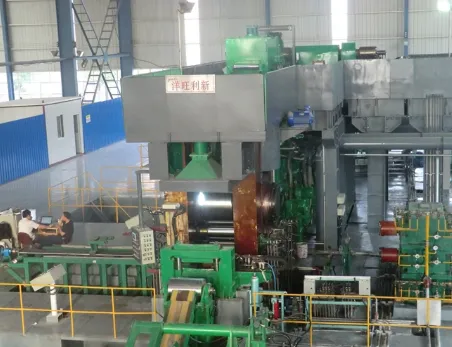
The Role of Cladding Rolling in the Manufacturing of Military Protective Materials
The manufacturing of military protective materials demands advanced engineering techniques to ensure durability, resistance, and performance under extreme conditions. Among these techniques, cladding technology plays a pivotal role, particularly through processes such as weld overlay cladding and cladding rolling mill operations. These methods enhance the structural integrity of military armor, vehicle plating, and other protective gear by bonding high-performance materials to base metals.

Understanding Cladding Technology in Military Applications
Cladding technology involves bonding two or more dissimilar metals to combine their beneficial properties. In military applications, this process is crucial for creating lightweight yet highly resistant materials capable of withstanding ballistic impacts, corrosion, and extreme temperatures.
One of the most effective cladding methods is weld overlay cladding, where a corrosion-resistant or high-strength alloy is deposited onto a base metal through welding. Weld overlay companies specialize in this technique, providing customized solutions for military armor and structural components. The overlay material, often an advanced alloy, enhances the base metal's performance without significantly increasing weight—a critical factor in military mobility.
The Role of Cladding Rolling Mills in Military Material Production
The cladding rolling mill is a cornerstone in the production of military protective materials. This process involves passing clad metals through heavy rollers to achieve uniform thickness, improved mechanical properties, and enhanced bonding between layers.
Hot vs. Cold Cladding Rolling
Hot Rolling: Used for initial thickness reduction, hot rolling in a cladding rolling mill ensures proper metallurgical bonding at high temperatures. This method is ideal for creating thick plates used in armored vehicles.
Cold Rolling: The cladding cold mill refines the material further, improving surface finish, dimensional accuracy, and strength. Cold-rolled clad metals exhibit superior hardness and fatigue resistance, making them suitable for lightweight body armor and aircraft plating.
Military applications benefit from both processes, as hot rolling provides structural integrity, while cold rolling enhances precision and resistance to wear.
Weld Overlay Cladding for Enhanced Protection
Weld overlay cladding is widely used in military manufacturing to reinforce critical components. For instance, tank armor often incorporates multiple layers of weld-overlaid metals to deflect projectiles and resist explosions. Leading weld overlay companies utilize advanced techniques such as laser cladding and plasma-transferred arc welding to ensure high deposition rates and minimal distortion.
The advantage of weld overlay lies in its flexibility—different alloys can be applied based on specific threats. For example, a chromium carbide overlay may be used for abrasion resistance, while a nickel-based alloy provides corrosion protection in naval applications.
Innovations in Cladding Processes for Military Use
Recent advancements in cladding technology have introduced automation and precision controls, reducing human error and increasing repeatability. Robotic weld overlay systems, for instance, allow for consistent application in complex geometries, such as curved armor plates.
Additionally, hybrid cladding methods combining weld overlay cladding with cladding cold mill processes are being explored to optimize material properties. These innovations ensure that military protective materials remain at the forefront of defense technology.
The integration of cladding rolling mills, weld overlay cladding, and advanced cladding processes has revolutionized the production of military protective materials. From armored vehicles to personal gear, these techniques provide unmatched strength, durability, and resistance. As weld overlay companies and metallurgical researchers continue to innovate, the future of military protection will rely even more heavily on these sophisticated manufacturing methods.
By leveraging cladding technology, defense industries can produce materials that meet the ever-evolving challenges of modern warfare, ensuring both safety and strategic superiority.
-
YWLX’s 1450mm Six-Hi Reversing Mill Goes Live in BangladeshNewsNov.24,2025
-
Adjusting Roll Gap in 6Hi Reversing Cold Rolling Mill for Thin StripNewsNov.13,2025
-
Quality Control Standards for Automatic Gauge Control in Strip RollingNewsNov.13,2025
-
Effect of Skin Pass Rolling on Metal DuctilityNewsNov.13,2025
-
Key Components of a Modern TempermillNewsNov.13,2025
-
Common Wear Patterns of Work Roll in Tandem Cold Mill OperationsNewsNov.13,2025
-
Revolutionary Skin Pass Rolling Technology for Enhanced Steel QualityNewsNov.04,2025










